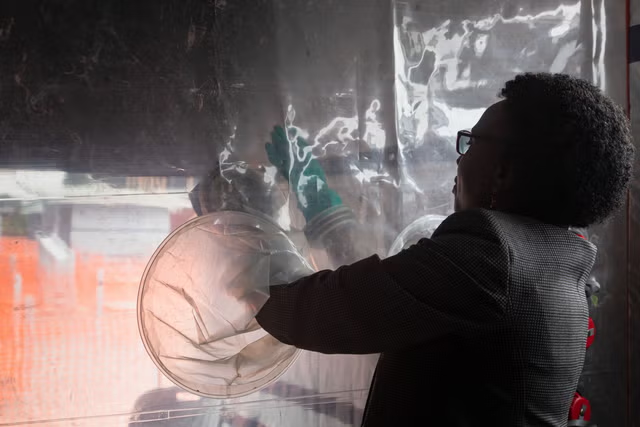A 6,800-year-old skeleton has been unearthed in Germany, belonging to a person who lived as far back as 4800 BC.
The remains are thought to belong to an older man from a Neolithic community, who may have been a figure of local importance akin to a village leader or mayor, according to Florian Eibl, the district archaeologist overseeing the excavation.
The skeleton, named "Exinger" after its place of discovery near Exing in Bavaria, is thought to be considerably older than the famous "Ötzi the Iceman," who lived approximately 5,300 years ago.
"This sensational discovery shows us that there was fertile soil in the district 4,500 years ago. This discovery enables us to explore the past a little further," district administrator Werner Bumeder said in a statement.
The Neolithic period spanned approximately between 7000 BC and 2000 BC, and marks the transition from nomadic hunter-gatherer lifestyles to settled agricultural communities. During this time, humans began to cultivate crops and domesticate animals, and started to build permanent homes and villages.
Due to how long ago the Neolithic was, very few skeletons have survived to the modern age.
"In Bavaria, there are fewer than 10 such body graves from this period," Eibl said during a press conference, local news Passauer Neue Presse reported.
The bones were found alongside several items, including eating and drinking vessels, dyes for body painting, a blade, and a stone ax. There was also a small bag that had been decorated with two halves of a boar's tusk—indicating the person's high status—containing fire-making tools.
"[The bag] may have contained a colored stone as well as pyrite and flint as a lighter. The bag trim consisted of a split boar's tusk—a badge of rank at that time," Eibl told local news Bayerischer Rundfunk 24.
The finding of the body alongside these grave goods suggests that the body is male, and the fact that it was buried in a grave at all—uncommon for the time—implies that the person may have been an authority figure in the community.
The excavation site, located adjacent to a busy road, was not initially expected to yield significant archaeological finds, with the discovery being made when construction workers unearthed parts of a grave vessel.
Further analysis, including radiocarbon dating, will provide more precise information about the age and identity of the Exing skeleton, while the artifacts found with the skeleton are hoped to offer new insights into the daily lives and social structures of Neolithic communities in Central Europe.
Do you have a tip on a science story that Newsweek should be covering? Do you have a question about archaeology? Let us know via science@newsweek.com.
Disclaimer: The copyright of this article belongs to the original author. Reposting this article is solely for the purpose of information dissemination and does not constitute any investment advice. If there is any infringement, please contact us immediately. We will make corrections or deletions as necessary. Thank you.



